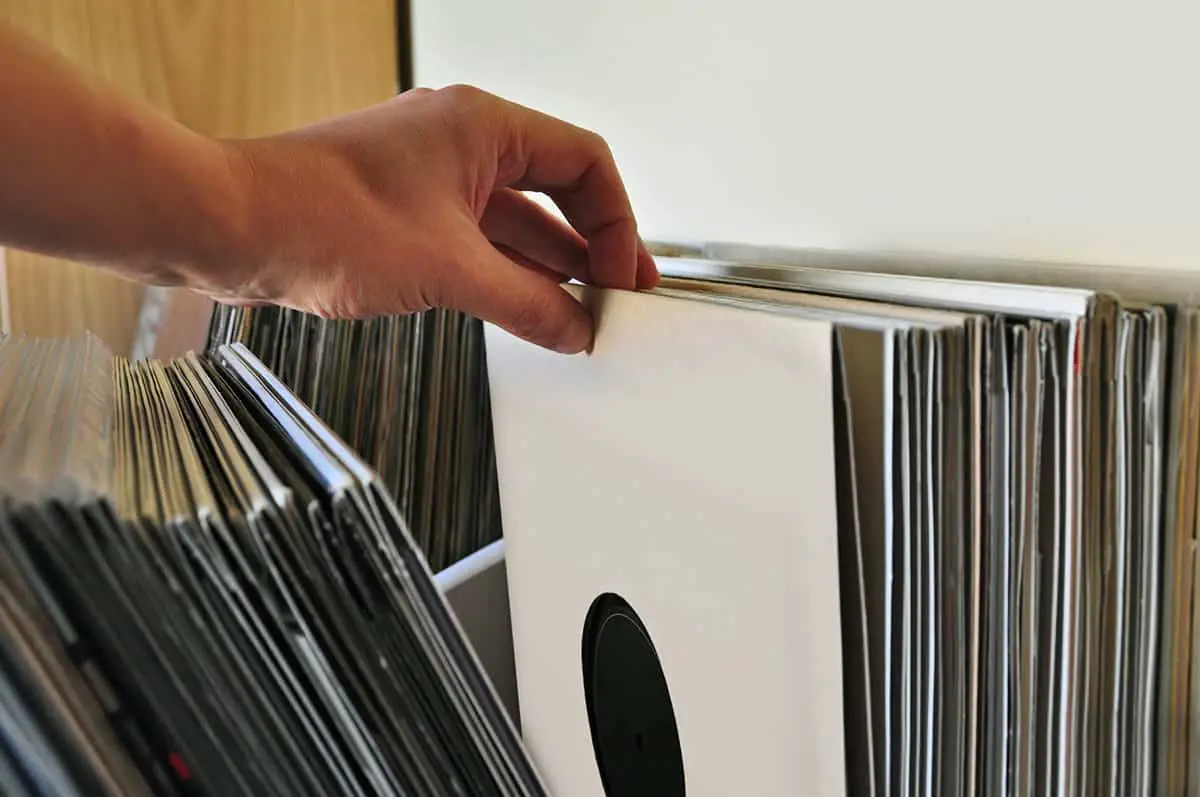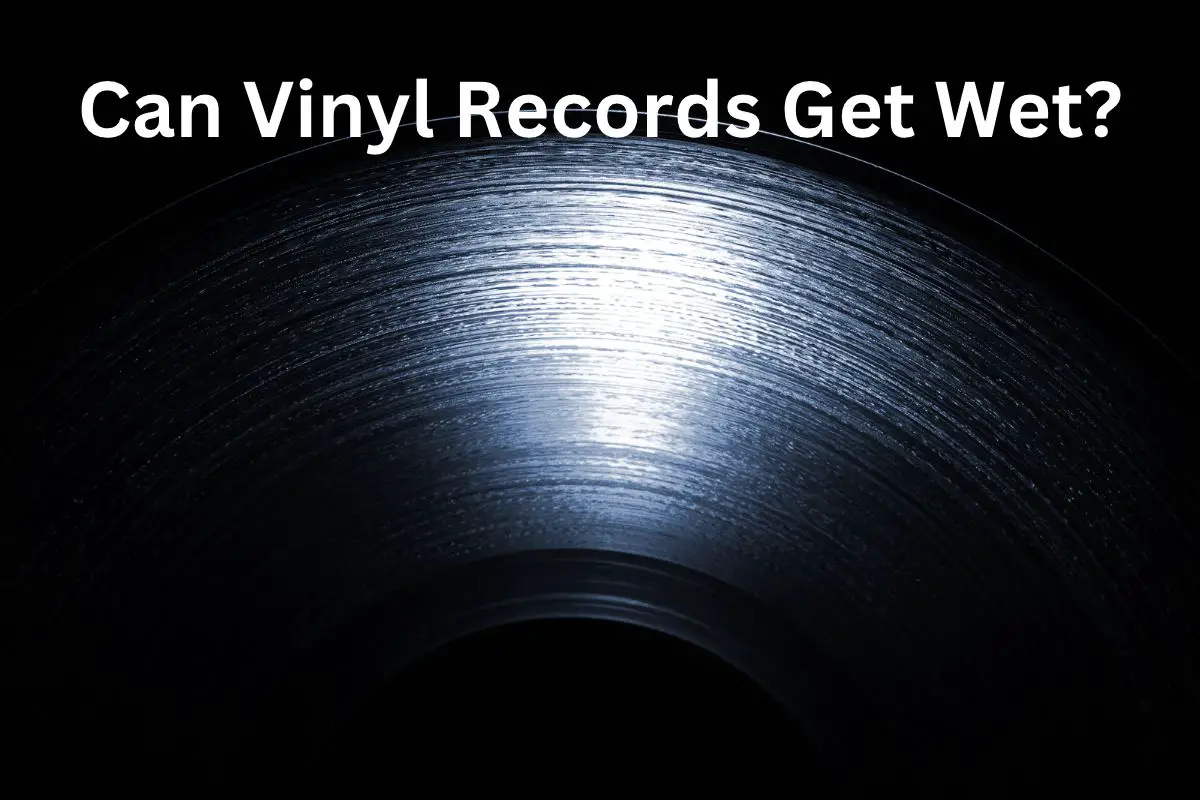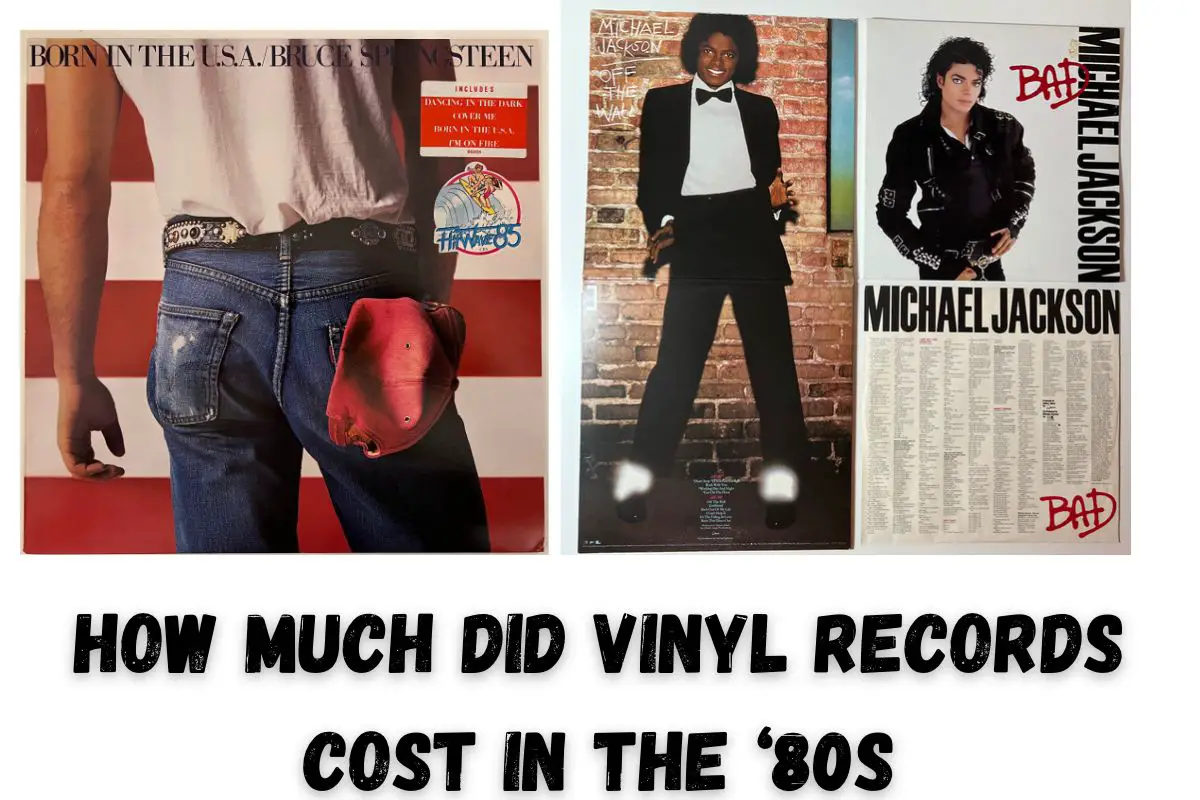This post contains affiliate links.
Whether you own five or five hundred records, organizing your vinyl collection can be tricky. There are lots of ways to organize records, but depending on the size of your collection, how often you play the records, and how you’d like to display your collection, some options are better than others.
Here are a few great ways to organize your vinyl record collection:
- By genre
- By value
- Alphabetically
- Chronologically
- Aesthetically (by Album Art)
Let’s discuss each of these organizational methods, how to implement them, and why they might be a great fit for you. Additionally, most of these methods can be done in combination, as organizing your collection should be best fit for your listening habits and taste.
Table of Contents
1. By Genre
Organizing by genre can be an excellent way to make your collection organized but still easy to access.To divide by genre, first, decide which genres most of your records fall into.These can include:
- Rock
- Pop
- Hip Hop
- Electronic/Dance
- Indie
- Jazz
Once you have an idea of which categories your music falls into, start dividing the records.You can do this by separating record genres into stacks or boxes, as you can always arrange them on an organizer afterward.
Once you have your music sorted by genre, it’s time to put everything away. You can also use this process to take out items you’d instead donate or sell.This way, you’ll free up room for new records in your collection.
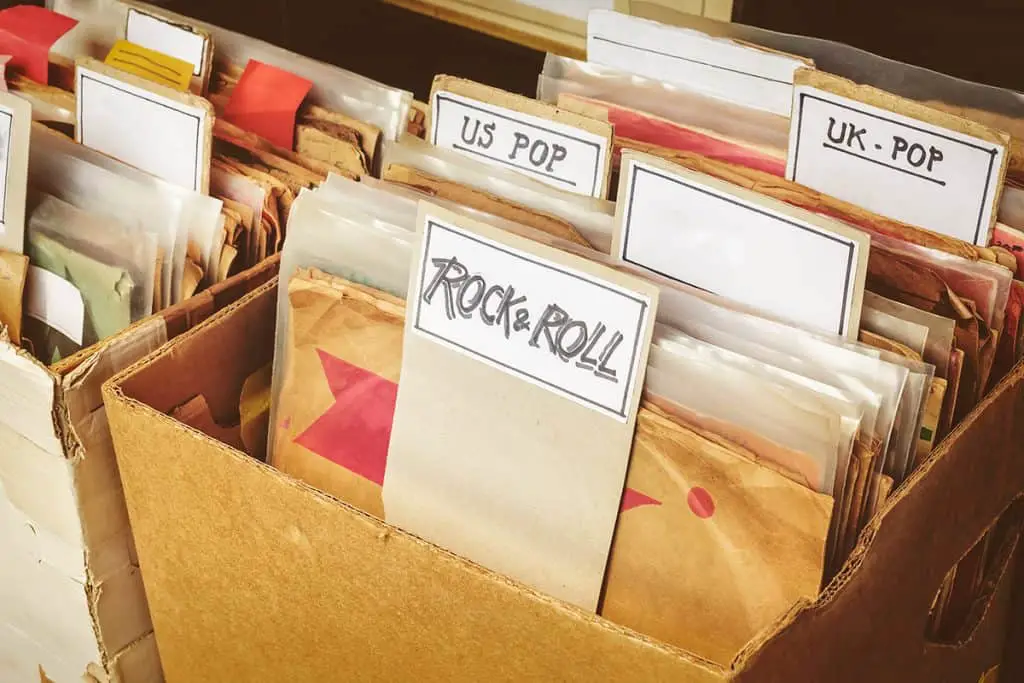
The most significant benefit of organizing by genre is how easy it makes listening. If you’re in the mood to hear a genre rather than a particular artist, organizing this way makes it incredibly easy to locate records, even out of extensive collections. It’s also an excellent fit for people who enjoy the way streaming platforms like Spotify and Pandora categorize music.
However, one downside of this method is that many albums don’t fall into concrete genres. It’s difficult to classify certain records if they’re genre-bending, experimental, or just don’t fit with your typical listening tastes.
Another thing to consider is how many records you have within a genre. If you mostly listen to hip hop, you may want an additional method of organization within the division by genre. You could do this by implementing almost any other option on this list.
The best way to organize by genre is through a shelving system, which you can easily create by designating a record organizing rack (or racks) for each genre.
For an excellent record rack to organize by genre, check out this KAIU Vinyl Record Storage Holder from Amazon.com.
2. By Value
If you sell records as a side hustle, this is the option for you. Organizing by value is a great way to divide your record collection if you eventually plan on selling items in your collection. Or, you could do this as a way to prioritize higher value records, as many collectors like to show off their most prized items.
Organizing by value can be done similarly to organizing by genre. However, keep in mind that stacking records or not relocating them can compromise the album’s condition. For example, if you have a mint-condition record, you wouldn’t want to put it at the bottom of a stack where it could be damaged.
This organizational method can be complicated for those unfamiliar with record values. However, there are plenty of helpful resources for determining record value. Moreover, even if you don’t want to sell your records in the near future, it’s good to know the value of some records to help you take better care of valuable items.
Most collectors use the Goldmine Grading System, which you’re already familiar with if you’ve bought a record listed as “mint,” “excellent,” or “fair.” This grading system is widespread, so familiarizing yourself with it in order to organize your record collection is truly a helpful skill for any collector.
Organizing by value doesn’t require any special equipment, apart from sturdy shelving that applies to any method of organization. But if you’re dealing with high-value records, it’s wise to purchase some protective sleeves. These Invest In Vinyl Plastic Sleeves from Amazon.com are perfect for collectors that want to keep their vinyl in the best condition possible.
3. Alphabetically
Organizing your vinyl records alphabetically is perhaps the most versatile option on this list. If you want to organize alphabetically, you could use a variety of different alphabetizing systems, such as:
- Artist first name
- Artist last name
- Record title
- Artist name + record title
How you choose to alphabetize your records depends on how many records you have by a particular artist (for example, if you have all thirty-nine Prince albums, organizing by artist name alone won’t help you very much).
However, if you have a few albums by each of your favorite artists, this can be a perfect way to organize your records. Dividing your collection by artist name, in particular, is an excellent fit for people who are more fans of individual artists rather than one specific genre.
Alphabetizing is an excellent option for people who love Spotify’s “This Is” playlists or enjoy an artist’s complete collection. Organizing this way allows these kinds of listeners to have an artist’s discography easily accessible.

Alphabetizing by album name is also a good choice, but not for certain collectors. Suppose you consider it disrespectful to put Olivia Rodrigo’s Sour next to The Beatles’ Sgt. Pepper’s Lonely Hearts Club Band, for example. In that case, this method won’t be the best option for you.
The other major downside of alphabetizing by album name is it may be hard to remember what songs are on which albums. When artists aren’t grouped together, you may have to pull multiple records to find a particular song.
All in all, alphabetizing by last name/band name is probably your best option. This way, all of the music from one artist is kept together but still organized. Plus, you can take out records and play them without too much hassle in finding their exact home on your shelf when you’re done.
If this method sounds like a good fit for you, consider some alphabetical tabs for organizing your records. These Cap Collectibles Black Vertical Record Dividers from Amazon.com are the perfect way to make your collection even more organized and accessible.
4. Chronology
Whether you love music from a specific time period or you like seeing how artists progress, organizing your music chronologically can be perfect for some collectors.
Organizing chronologically has an additional benefit for fans of artists with defined eras. For fans of Taylor Swift, for example, a chronologically organized record collection would show the shift from country, to country-pop, to pop, to indie pop.
One downside of organizing your records based on when they were released is that this system makes rereleases, remasters, and special/limited edition records hard to classify. If you want to categorize your copy of Fleetwood Mac’s Tango in the Night, but it’s the 2017 remaster, then how do you classify it?
If this issue doesn’t bother you, though, it’s a wonderful option for organizing your vinyl collection.
5. Aesthetically (by Album Art)
If you love your records and pride yourself on your vinyl collection, why not display it? Organizing your records by cover art is a perfect option for those who listen to their records frequently and want to show them off.

One advantage to organizing your records like this is that you can do it in addition to another organizational method. If you have ten favorite albums, display them on your wall or prominently on your shelf, and have the rest organized by band name, for example.
Additionally, having a way to display your records means you can easily change them out when your favorite records change.
If you want to organize your records in a way that makes them easiest to display, you’ll need wall mounts. This NIUBEE Vinyl Record Mount 6 Pack from Amazon.com is perfect for listeners who want their records to double as wall art and still be able to play them frequently.
Why You Should Organize Your Vinyl Records
There are lots of benefits to organizing your record collection, and although it can be a time-consuming task, it’s well worth the effort. Organizing your records:
- Makes them easier to listen to. You can’t listen to your records if they’re in a box in the attic.Organizing your records makes them easily accessible so you can play them as often as you’d like.
- Keeps them in good condition. Disorganized stacks of records collect dust, fray at the edges, and even get bent or scratched. Making sure your collection is in a comprehensive, organized arrangement will keep them upright, easy to dust, and damage-free. Additionally, keeping your records in good condition means you have the option of selling them later, which is discussed more below.
- Helps you know the contents of your collection. Perhaps your collection has reached the point where you don’t even know what you have anymore. Organizing your records gives you the opportunity to see what you have and remember to revisit albums you used to love. However, you should remember to remain disciplined and whenever you listen to one record, put it away afterward.
- Gives you the chance to switch things up. Part of the fun of collecting records is getting to add to your collection! Reorganizing your records lets you know what you can get rid of and what you’d like to add to your vinyl repertoire. Even if you don’t want to sell some of your records, you can always purchase new ones that you forgot you wanted.
Things To Consider
When deciding to organize your record collection and choose the best method for you, there are a few things to keep in mind, as not every organizational strategy will suit every collector.
- Time
- Number of records
- Frequency of use
Time
If you have over 100 records, organizing them chronologically, for example, might require a little more research than you’d like to put in. Moreover, if you don’t want to spend a lot of time organizing your record collection, grading every single record to find its value may be too much work.
If you’re willing to start a slightly more significant undertaking, however, finding the value of all of your records or alphabetizing may be well worth your time.
Number of Records
If you have hundreds of records, you likely can’t display all of them on your walls. However, other methods of organizing can be perfect for those with extensive vinyl collections. Alphabetizing by band name, for example, can be a beneficial investment of your time if you have lots of records and no way of knowing how to find anything.
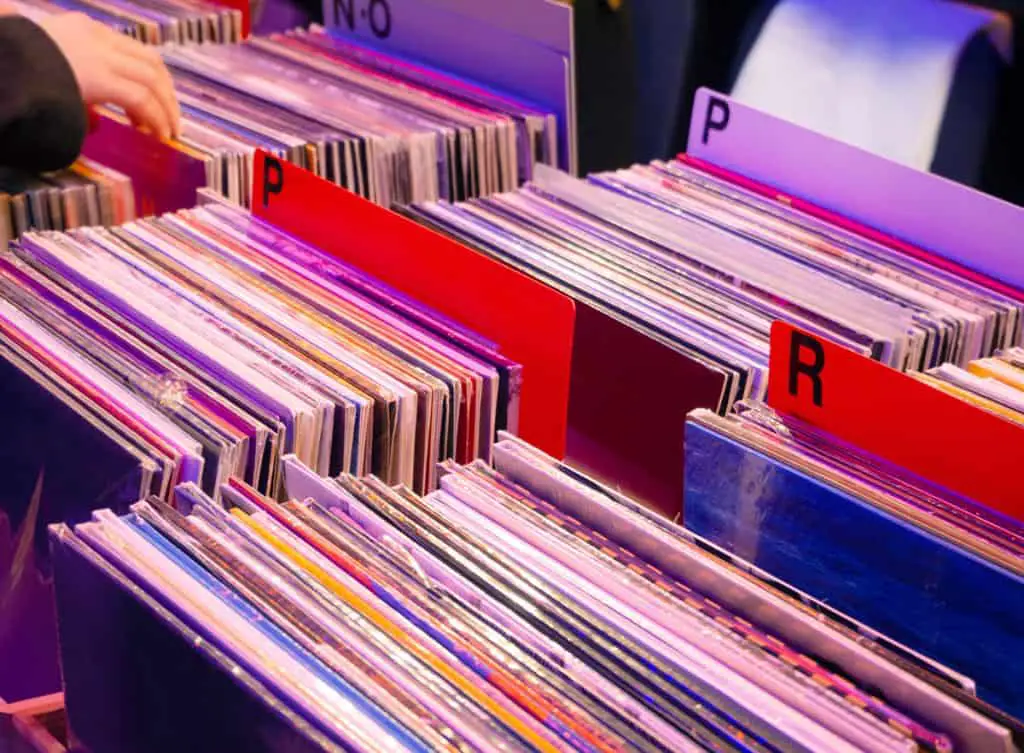
Frequency of Use
If you listen to one or two albums year-round, organize your collection accordingly. Your records are for you to enjoy, so keeping it stuck between two records on your shelf that you never listen to doesn’t benefit anyone.
If you have just a few records you love more than the rest, consider organizing album art and displaying them on your wall. This method not only makes them super easy to access, but displaying these albums is also a way of expressing your love for particular music.
You could also dedicate an extra shelf to the records you last played. This way, you can access the ones that seem more appealing to you or fit your mood.
Final Thoughts
Organizing your record collection can be difficult, especially if you don’t know where to start. There are many ways to organize vinyl, but a few stand out as the easiest and most accessible for most collectors.
For most listeners, organizing music by band name and artist last name is helpful, easy, and efficient. However, other listeners may benefit from displaying their records and organizing by the cover art.
However you choose to organize your music, doing so makes it easier to access and appreciate your vinyl collection.
VacationVinyl.com is a participant in the Amazon Services LLC Associates Program, an affiliate advertising program designed to provide a means for sites to earn advertising fees by advertising and linking to Amazon.com. We also participate in other affiliate programs which compensate us for referring traffic.

